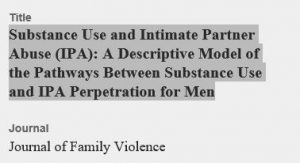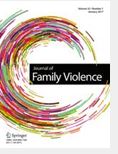Elizabeth Gilchrist et al have published a paper last month focusing on pathways leading to substance using related IPA perpetration towards women by men who were recruited from substance use treatment settings.
Abstract
Intimate partner abuse (IPA) is a pervasive public health and human rights issue disproportionately affecting women. There is
a complex link between IPA and substance use; substance use can increase both the frequency and severity of IPA. Pathway
models have been applied to explore heterogeneous trajectories into other behaviours and to identify areas for intervention.
This approach has not previously been applied in the area of substance use and IPA. Inductive thematic analysis of 37 interviews
with heterosexual men aged 28–52 who had reported previous IPA perpetration was conducted. Men were recruited
from alcohol and drug services across two areas of England. Three groupings of pathways into substance use-related IPA
were generated: 1) Rule Breaking Pathway (n = 11); 2) Entrenched Substance Use Pathway (n = 13); and 3) Relationship
Insecurity Pathway (n = 13). Across the three groupings of pathways, the men’s childhood and early experiences led to different
journeys into SU-related IPA (abuse that was associated with intoxication, withdrawal, acquisition and substance use
lifestyle). Each pathway presented differently with varying core features, for example core features of generalised violence,
mental health or jealousy, and different predisposing background factors, including types and timing of childhood abuse and
trauma. Adopting a pathways approach drawing on principles of equifinality and multifinality can improve understanding of
heterogeneity in men who perpetrate IPA and use substances and propose treatment/intervention targets.
You can access the article for free here.


